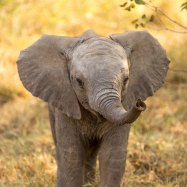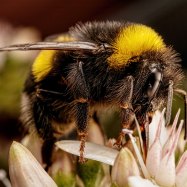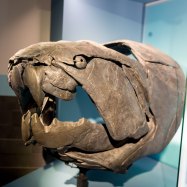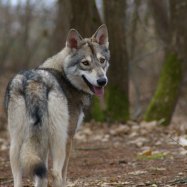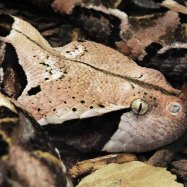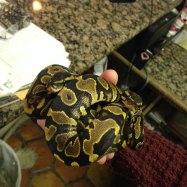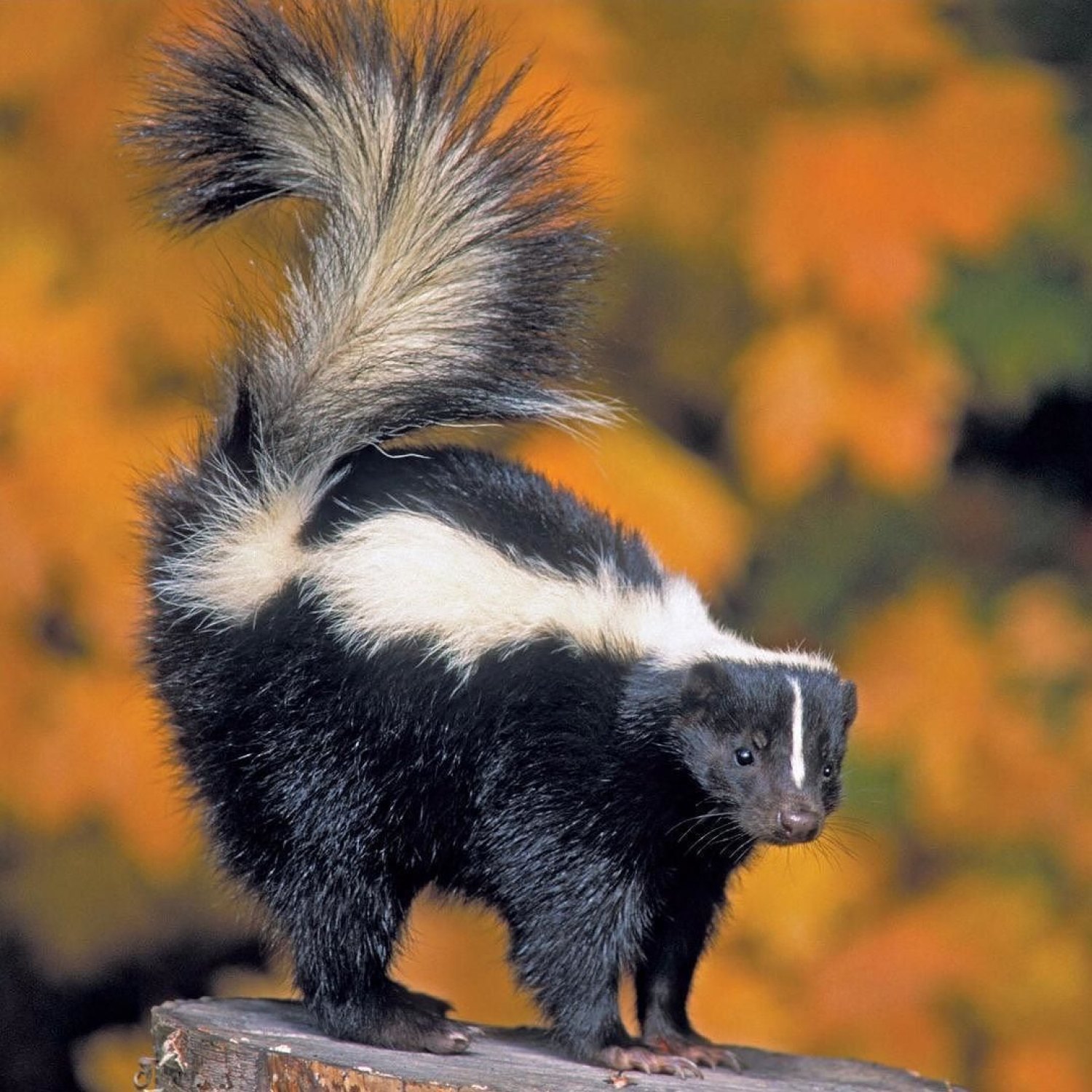
Skunk
40 to 70 cm
The skunk, found in North and Central America, is known for its infamous defensive spray. Despite its reputation, this small animal with a stout body and short legs is mostly nocturnal and omnivorous. They are a part of the Mephitidae family and can grow up to 40-70 cm in length. Don't let their name and smell fool you, these animals play a vital role in their ecosystems. #skunk #animals #mephitidae
Animal Details Summary:
Common Name: Skunk
Kingdom: Animalia
Habitat: Woodlands, grasslands, and suburban areas
The Misunderstood Creature: Unraveling the Fascinating World of the Skunk
When you think of a skunk, the first thing that probably comes to mind is its pungent smell. But did you know that there's a lot more to this infamous mammal than meets the eye (or nose)? In the animal kingdom, the skunk may not be as popular as other furry creatures, but it certainly has a unique set of characteristics that make it stand out. From its scientific name, Mephitis mephitis, to its distinctive black and white color, the skunk is a fascinating creature that deserves recognition and understanding.The skunk belongs to the family Mephitidae, which means "stinky" in Greek Skunk. This is a fitting name for an animal known for its foul smell. But contrary to popular belief, not all species of skunks have the same odor. In fact, there are different types of skunks, each with its own distinct scent. For example, the striped skunk is known for its pungent spray, while the spotted skunk releases a more musky odor.
Native to North America, the skunk can be found in various habitats such as woodlands, grasslands, and even suburban areas. Its geographical distribution extends from Canada to the United States, making it a common sight in North and Central America. But why is the skunk often found near human settlements? Let's dive deeper into the behavior and characteristics of this fascinating animal to find out.
An Omnivorous Diet and Clever Foraging Habits
The skunk is an opportunist when it comes to food, meaning it will eat almost anything it can find. Its diet includes insects, small rodents, birds, fruits, and vegetables, making it an omnivorous animal Seahorse. This dietary flexibility enables the skunk to thrive in various environments, from the wilderness to urban areas.With its keen sense of smell and good hearing, the skunk is an excellent hunter. However, it also has a clever foraging technique called "scratching." Skunks have long claws that they use to dig in the ground, looking for insects and plant roots. This strategy is especially useful during winter when food is scarce, and the ground is frozen.
Moreover, skunks are opportunistic eaters, which means they will also consume human waste and garbage. This behavior often leads to negative encounters with humans and may contribute to the misconception that skunks are dirty and dangerous animals.
The Skunk's Defense Mechanism: Its Infamous Smell
Now, let's address the elephant in the room (or shall we say, the skunk in the forest?) – the odor. When a skunk feels threatened, it will release its infamous spray, which can travel up to 10 feet away. The pungent smell is a warning signal to potential predators, and it can last for days on end, making it challenging to get rid of.But what exactly is in the skunk's spray that makes it so potent? The liquid is a mixture of sulfur-containing chemicals, including butyl mercaptan, which is also found in rotten eggs. These chemicals are released from the skunk's anal glands, and they can cause temporary blindness and difficulty breathing in predators.
It's also worth noting that skunks don't use their spray as their first line of defense. They will first try to intimidate their enemies by stomping their feet, growling, and displaying their black and white coloration. By doing so, they hope to scare off potential threats without resorting to using their spray. Unfortunately, most people are not aware of this behavior and tend to see skunks as aggressive animals.
A Versatile and Adaptable Creature
Aside from their clever foraging techniques and defense mechanism, skunks are also known for their adaptability. They are excellent climbers and can live in various habitats, from forests to urban areas. They can also dig their own burrows or use existing ones, making them resourceful creatures.Moreover, skunks are known for their ability to survive harsh winters. They have a thick coat of fur that keeps them warm, and they can also lower their body temperature and enter a state of deep sleep to conserve energy. Additionally, skunks have a slow metabolism, allowing them to go without food for long periods.
Skunks also have a versatile diet, as mentioned earlier, which enables them to thrive in different environments. They are not picky eaters, and they can adapt to changes in their food sources, making them resilient creatures.
A Misunderstood Creature That Deserves Our Respect
Despite its bad rap, the skunk is a fascinating and highly adaptable creature that plays a crucial role in its ecosystem. They help control the population of insects and small rodents, making them beneficial for farmers and gardeners. Their burrowing also helps improve soil aeration and nutrient circulation.Furthermore, skunks are non-aggressive animals and will only use their spray when they feel threatened. Unfortunately, their infamous scent often leads to negative encounters with humans, and they are often seen as pests that need to be removed. It's essential to remember that skunks are a part of our ecosystem, and they deserve our respect and understanding.
Conclusion: Unveiling the Beauty of the Skunk
In summary, the skunk is a versatile and adaptable creature that often gets a bad rap because of its foul smell. However, these misunderstood animals have fascinating behaviors and characteristics, from their clever foraging techniques to their unique defense mechanism. They are also highly adaptable creatures that can thrive in various habitats and have a versatile diet.It's time to give the skunk the recognition it deserves and change the negative perception associated with this creature. Let's remember that these animals play a vital role in our ecosystem and should be respected and treated with care. So the next time you see a skunk, appreciate its unique qualities and admire its ability to thrive in challenging environments. Who knows, you may even learn a thing or two from these fascinating creatures.

Skunk
Animal Details Skunk - Scientific Name: Mephitis mephitis
- Category: Animals S
- Scientific Name: Mephitis mephitis
- Common Name: Skunk
- Kingdom: Animalia
- Phylum: Chordata
- Class: Mammalia
- Order: Carnivora
- Family: Mephitidae
- Habitat: Woodlands, grasslands, and suburban areas
- Feeding Method: Omnivorous
- Geographical Distribution: North America
- Country of Origin: United States and Canada
- Location: North and Central America
- Animal Coloration: Black with white stripes or spots
- Body Shape: Small, stout body with short legs
- Length: 40 to 70 cm
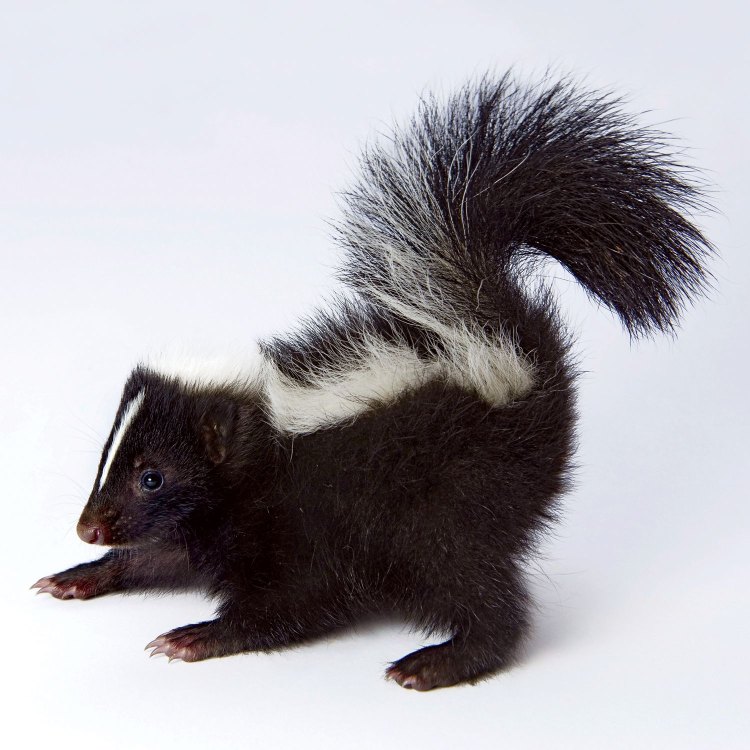
Skunk
- Adult Size: Medium-sized
- Average Lifespan: 2 to 5 years in the wild, up to 10 years in captivity
- Reproduction: Sexual
- Reproductive Behavior: Mating occurs during the winter
- Sound or Call: Primarily communicates through scent marking but can make hissing and chattering sounds
- Migration Pattern: Non-migratory
- Social Groups: Solitary
- Behavior: Nocturnal and secretive
- Threats: Habitat loss, road casualties, hunting
- Conservation Status: Least Concern
- Impact on Ecosystem: Helps control rodent populations
- Human Use: Skunk fur is used for clothing and accessories
- Distinctive Features: Strong odor, black body with white markings
- Interesting Facts: Skunks are known for their ability to spray a foul-smelling liquid as a defense mechanism
- Predator: Coyotes, foxes, owls, and humans
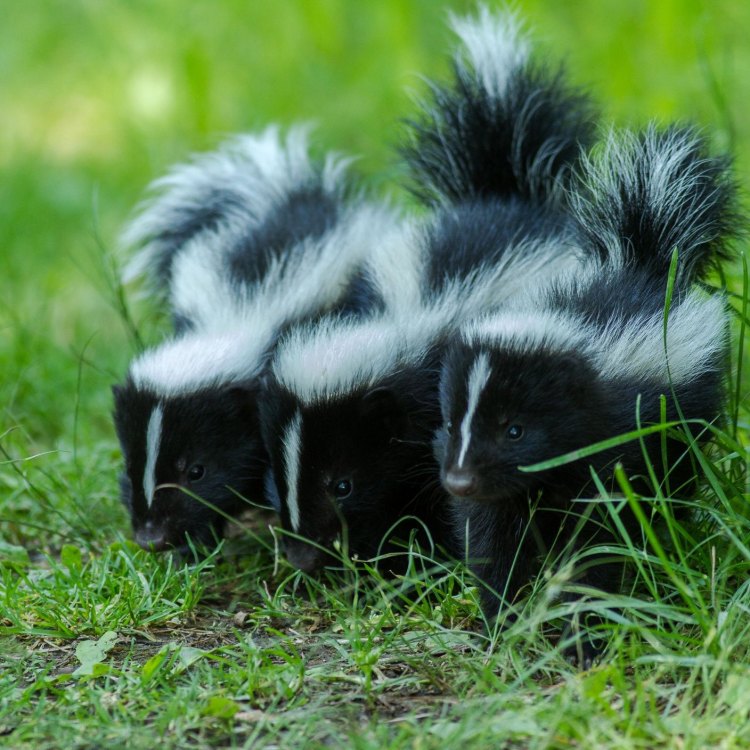
Mephitis mephitis
The Fascinating World of the Skunk: From its Natural Habits to its Unique Defense Mechanism
When you hear the word "skunk", a distinctive image probably comes to mind – a small, black and white creature with a strong and unpleasant odor. Skunks have become infamous for their ability to spray a pungent liquid from their anal glands as a defense mechanism. But beyond their smelly reputation, skunks are actually fascinating creatures with many unique features and behaviors.Let's take a closer look at the life of a skunk, from its physical characteristics to its impact on the ecosystem and its relationship with humans PeaceOfAnimals.Com.
Adult Size
Skunks are classified as medium-sized mammals, typically ranging from 14 to 30 inches in length and weighing between 1 and 18 pounds. Their size may vary depending on the species and their geographical location. In general, skunks are larger and more robust in the northern parts of their range, where they have to endure harsher weather conditions.
Average Lifespan
In the wild, skunks have an average lifespan of 2 to 5 years. However, in captivity, they can live up to 10 years. This significant difference in lifespan can be attributed to the various threats that skunks face in the wild.
Reproduction and Reproductive Behavior
Skunks reproduce sexually, with mating occurring during the winter months. Male skunks will often roam to find a mate, and they use scent marking as a way to attract females. This is when their distinct odor really comes into play Sarplaninac.
After mating, the female skunk will undergo a gestation period of about 60 to 75 days before giving birth to a litter of 2 to 10 kits. These kits will stay with their mother for about a year before they venture off on their own.
Sound or Call
Skunks primarily communicate through scent marking, but they can also make hissing and chattering sounds to warn off potential predators or during encounters with other skunks. Their hissing and chattering sounds are often accompanied by stomping their feet as a form of intimidation.
Migration Pattern
Unlike some other animals, skunks are non-migratory, meaning they do not move long distances in search of food or better habitats. They tend to have a small home range and will stay in one area as long as resources are abundant.
Social Groups
Skunks are primarily solitary animals and will only come together for the purpose of mating. After giving birth, the female skunk is solely responsible for caring for her kits, while the male skunks have no involvement in raising their offspring.
Behavior
Skunks are active at night and are considered to be nocturnal. They are also very secretive creatures, often preferring to hide in dens or burrows during the day. This behavior not only helps them avoid predators but also keeps them cool during hot summer days.
Threats
Like many other wildlife species, skunks face various threats to their survival. Habitat loss is one of the biggest threats, as their natural habitats continue to be destroyed for agriculture, development, and other human activities. They are also at risk of being hit by cars as they often scavenge along roadsides. Skunks may also fall prey to animals such as coyotes, foxes, and owls, as well as humans who may hunt them for their fur.
Conservation Status
Despite these threats, skunks are currently listed as "Least Concern" on the IUCN Red List of Threatened Species. This is mainly due to their adaptability and wide distribution across North America, as well as their ability to coexist with human development.
Impact on Ecosystem
Skunks play an essential role in controlling rodent populations. As omnivores, they eat a variety of insects, plants, and small animals, including mice, rats, and insects considered pests by humans. By keeping these populations in check, skunks help maintain a balance in the ecosystem.
Human Use
Humans have had a complicated relationship with skunks. On one hand, they have been hunted for their fur, which was once used to make clothing and accessories. Thankfully, this practice has significantly decreased in recent years due to the development of faux fur alternatives.
On the other hand, skunks are also seen as pests by some people due to their ability to damage gardens and property. However, as mentioned previously, skunks actually play a beneficial role in controlling rodent populations and can be helpful in keeping garden pests at bay.
Distinctive Features
The skunk's most distinctive feature is, of course, its strong and unpleasant odor. This odor is produced by glands located near the base of their tail, and they can release the spray up to 10 feet away. This smell can linger for days and is difficult to remove, making it a highly effective defense mechanism.
Apart from their strong odor, skunks are also known for their black body with white markings. However, not all skunks have the same pattern – some have stripes, while others have spots or a combination of both.
Interesting Facts
- Skunks are one of the slowest-moving mammals, with a top speed of only 10 miles per hour.
- They have excellent digging skills and use their strong claws to uproot and eat underground insects.
- Skunks are immune to their own spray and can even lick it off their fur without being affected by it.
- The most commonly known species, the striped skunk, can be found in almost every state in the US, except for Alaska and Hawaii.
Predators
Despite their potent defense mechanism, skunks do have predators in the wild. Coyotes, foxes, and owls are some of the few animals that can tolerate the skunk's smell and will prey on them if given the chance. However, perhaps the most significant threat to skunks is humans, who often kill them due to the perceived threat of their smell or for their fur.
In conclusion, skunks may not be the most beloved creatures, but they are undoubtedly fascinating. From their unique defense mechanism to their impact on the ecosystem, skunks play an important role in the natural world. By understanding and appreciating these amazing creatures, we can work towards coexisting with them in harmony. And who knows, maybe the next time you encounter a skunk, you'll see them in a whole new light.
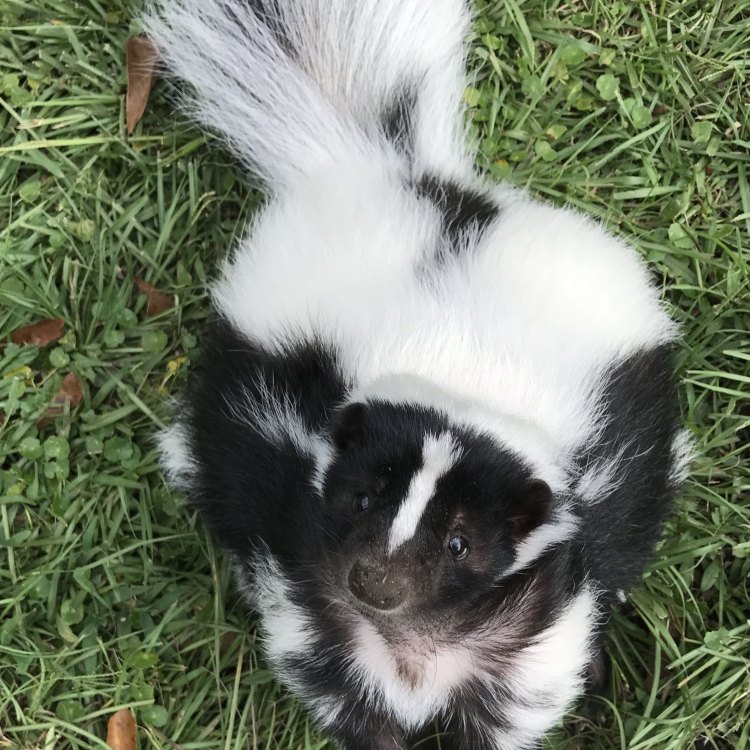
The Misunderstood Creature: Unraveling the Fascinating World of the Skunk
Disclaimer: The content provided is for informational purposes only. We cannot guarantee the accuracy of the information on this page 100%. All information provided here may change without prior notice.




